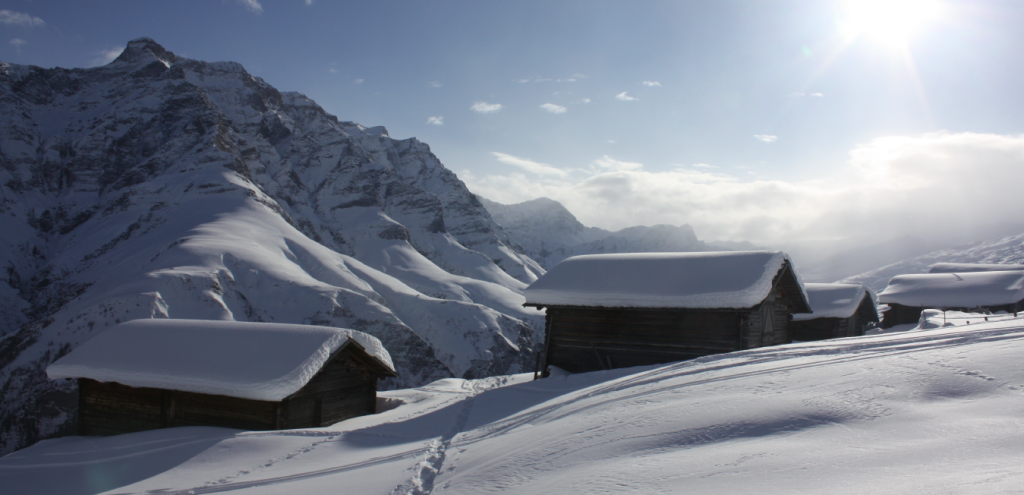Nature and culture
The special character of the Safiental valley is brought forth both by the outstanding topography as well as its isolation due to geological factors. The landscape’s relief is marked by high mountain ranges in the southern, western and eastern parts of the valley. Steep, unstable slopes and numerous ravines featuring wild mountain streams form the particularities of the valley’s landscape over long distances. Its natural borders therefore define the development and exploitation of the land: many meadows are impossible to cultivate intensively due to their topographic particularities and therefore remain untouched.
 However, the German-speaking Walser that started colonizing the region around 1300 did not shy away from the harsh geological and climate factors. They built their villages in such a way as to “enable everyone to have his own ground and soil around him”, since the extensive land necessary to cattle breeding required large surfaces, in the middle of which they placed their farmhouses. This strategy made for widespread settlements with large distances from one farmhouse to another, a typical feature still visible today.
However, the German-speaking Walser that started colonizing the region around 1300 did not shy away from the harsh geological and climate factors. They built their villages in such a way as to “enable everyone to have his own ground and soil around him”, since the extensive land necessary to cattle breeding required large surfaces, in the middle of which they placed their farmhouses. This strategy made for widespread settlements with large distances from one farmhouse to another, a typical feature still visible today.

Projects and initiatives such as the Walserpath and the Safier Ställe, as well as the local history museum in Camada-Boda tell visitors about the valley’s cultural heritage and highlight the relations between landscape and culture from a historical point of view. The Safiental landscapes have also appeared in several recent films, such as Walking to Paris (Peter Greenaway, 2016), The Hour of Living (Sebastian Michael, 2012) or The incredible adventure of Mocmoc & Mermer (Com&Com, 2005). But until today, the only experimental forms of music, film and visual arts shown in the valley were during the Safien Triennal festivals (2001, 2004, 2007).
The exhibition project Art Safiental expressly chooses to explore the close relationship between art and landscapes by developing Land Art projects in the Alps Art Academy on site.
